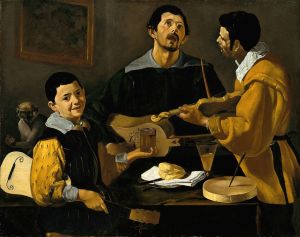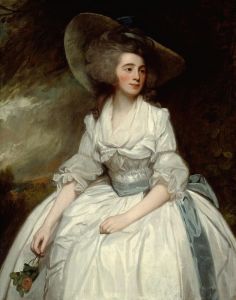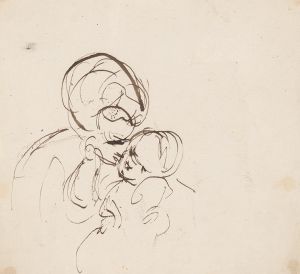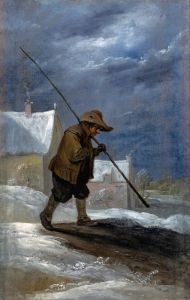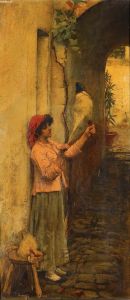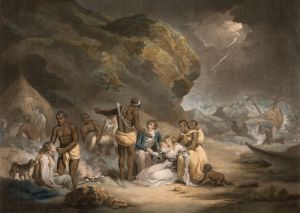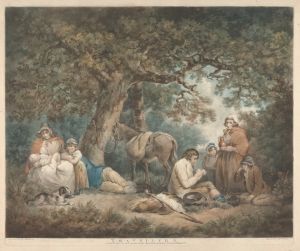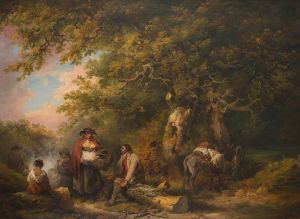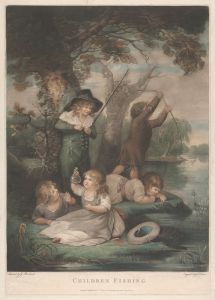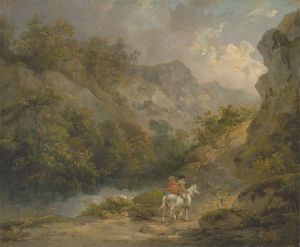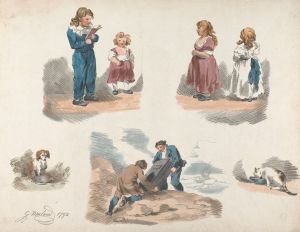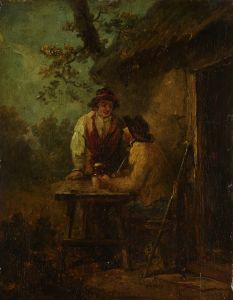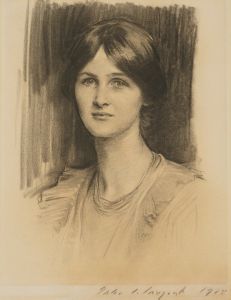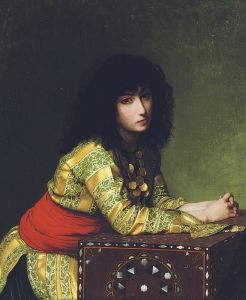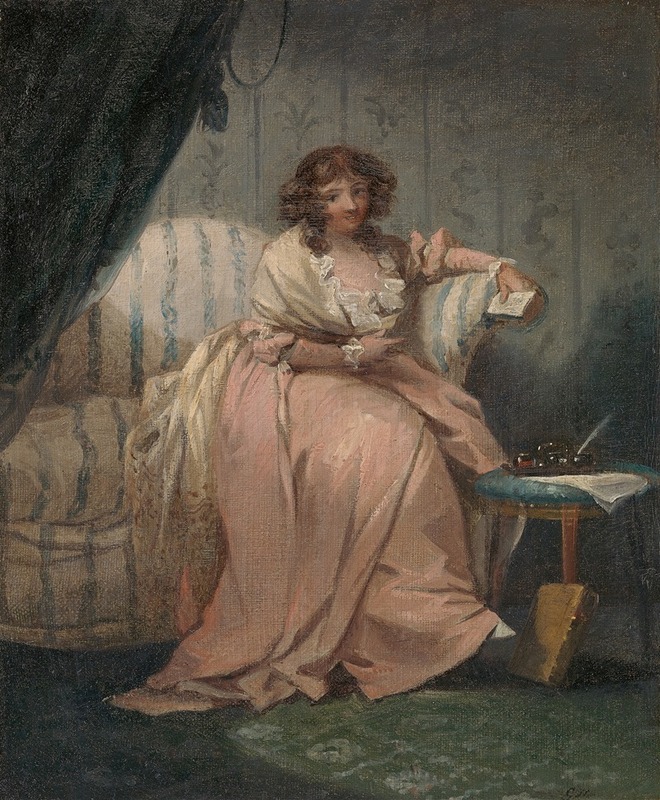
A Woman Called Anne, the Artist’s Wife
A hand-painted replica of George Morland’s masterpiece A Woman Called Anne, the Artist’s Wife, meticulously crafted by professional artists to capture the true essence of the original. Each piece is created with museum-quality canvas and rare mineral pigments, carefully painted by experienced artists with delicate brushstrokes and rich, layered colors to perfectly recreate the texture of the original artwork. Unlike machine-printed reproductions, this hand-painted version brings the painting to life, infused with the artist’s emotions and skill in every stroke. Whether for personal collection or home decoration, it instantly elevates the artistic atmosphere of any space.
George Morland was an English painter known for his rustic and genre scenes, often depicting rural life, animals, and landscapes. He was born in London in 1763 and became one of the most prolific and popular artists of his time. Morland's work is characterized by its lively and realistic portrayal of everyday subjects, and he was particularly skilled at capturing the subtleties of light and texture.
"A Woman Called Anne, the Artist’s Wife" is one of Morland's paintings, which, as the title suggests, features his wife, Anne. George Morland married Anne Ward in 1786, and she was the sister of his friend and fellow artist, William Ward. Anne often served as a model for Morland's paintings, and their relationship was a significant aspect of his personal life.
The painting "A Woman Called Anne, the Artist’s Wife" is a portrait that reflects Morland's ability to capture the essence of his subjects with sensitivity and attention to detail. While specific details about this particular painting are scarce, it is consistent with Morland's style to depict his subjects with a sense of realism and intimacy. His portraits often convey a sense of the personality and character of the sitter, and this work is likely no exception.
Morland's career was marked by both success and personal struggles. Despite his talent and popularity, he faced financial difficulties throughout his life, partly due to his extravagant lifestyle and issues with debt. These challenges did not diminish his artistic output, and he continued to produce a significant body of work until his death in 1804.
The painting of Anne, like many of Morland's works, would have been created using oil on canvas, a common medium for the time. His technique involved loose, expressive brushwork that brought a sense of vitality to his compositions. Morland's ability to depict the nuances of light and shadow added depth and realism to his paintings, making them highly sought after by collectors.
While "A Woman Called Anne, the Artist’s Wife" may not be as widely recognized as some of Morland's other works, it remains an important piece within his oeuvre, offering insight into his personal life and artistic approach. The painting serves as a testament to Morland's skill as a portraitist and his ability to convey the human experience through art.
George Morland's legacy as an artist endures, with his works held in various public and private collections. His paintings continue to be appreciated for their charm, technical proficiency, and the glimpse they offer into 18th-century English life. "A Woman Called Anne, the Artist’s Wife" is a part of this legacy, reflecting both the personal and professional aspects of Morland's life and career.





